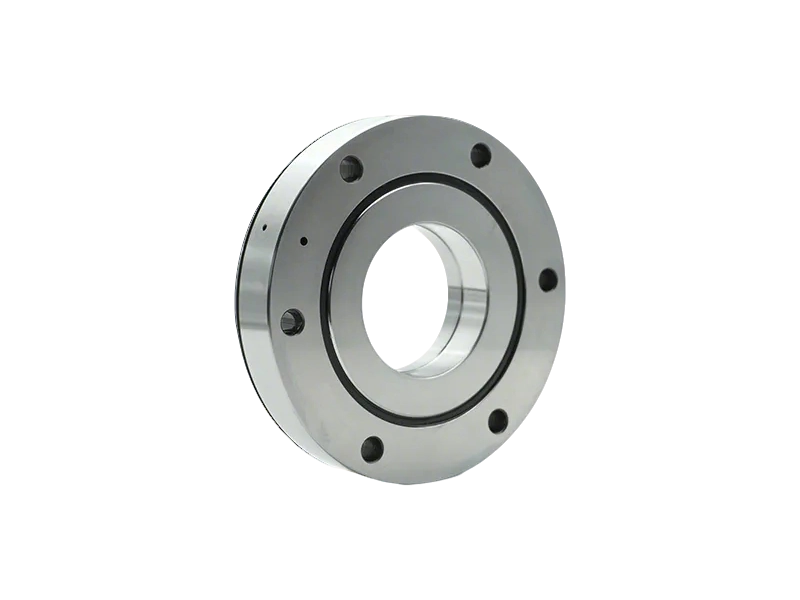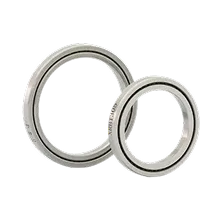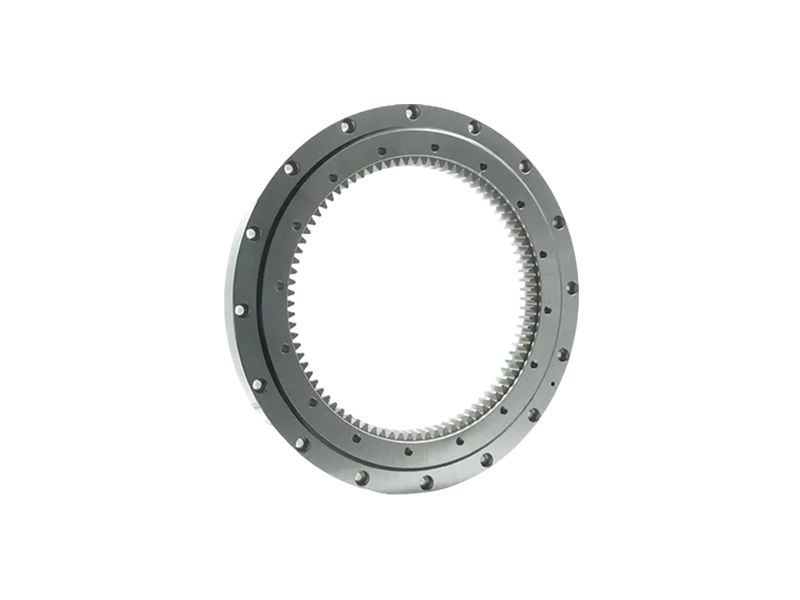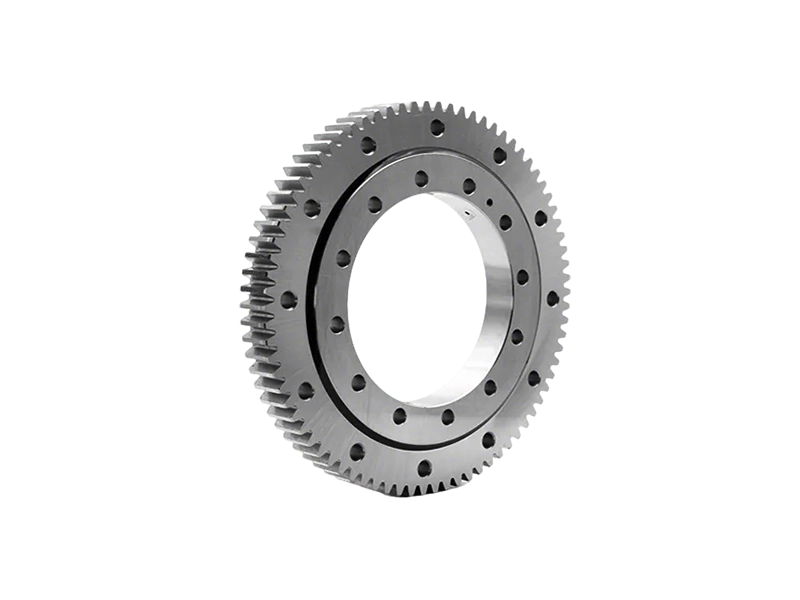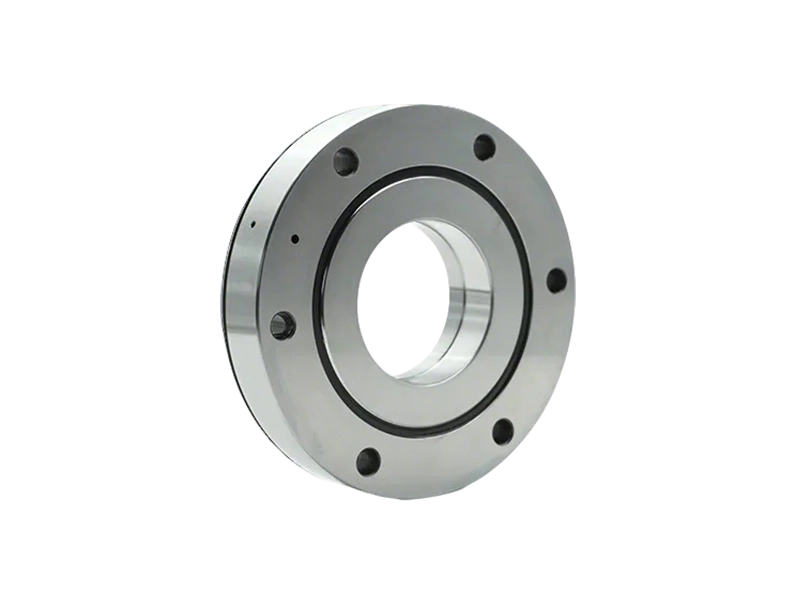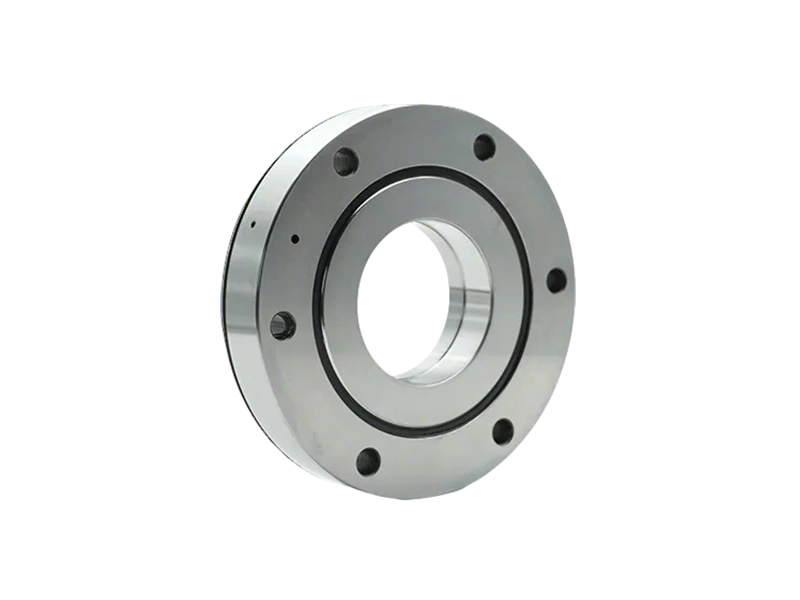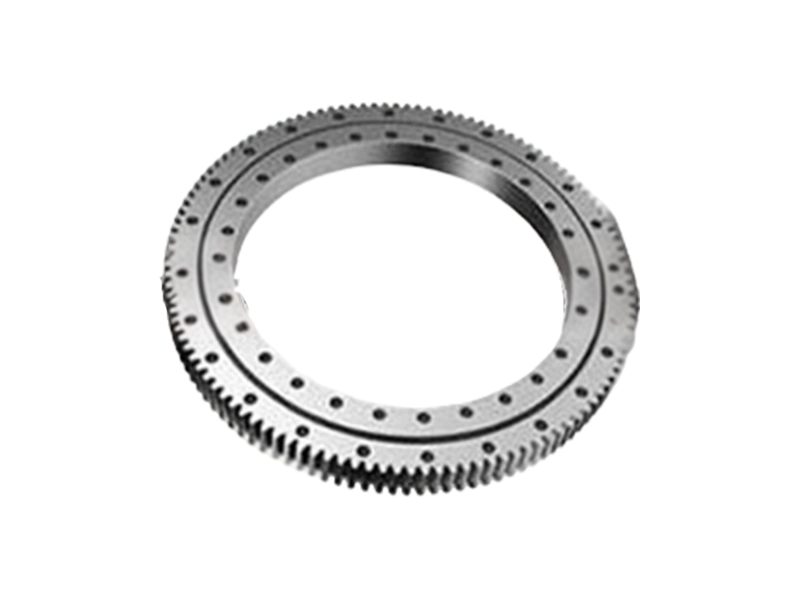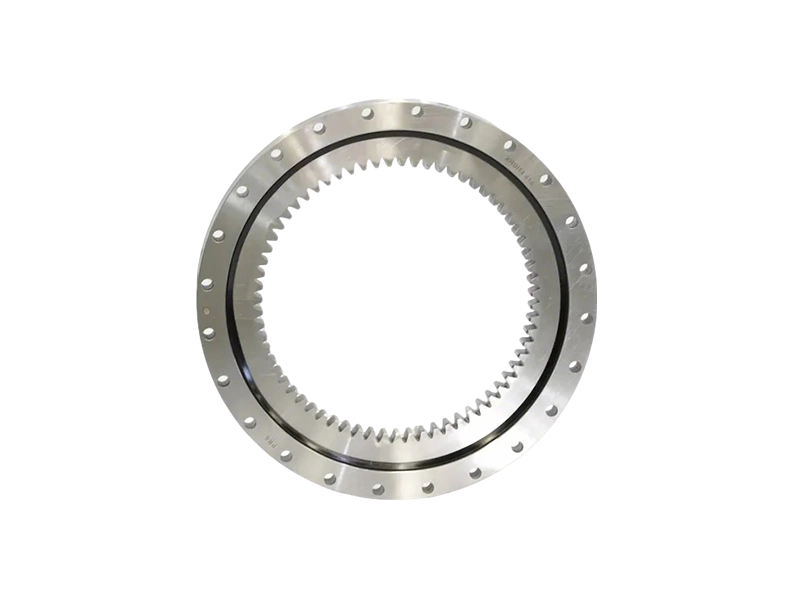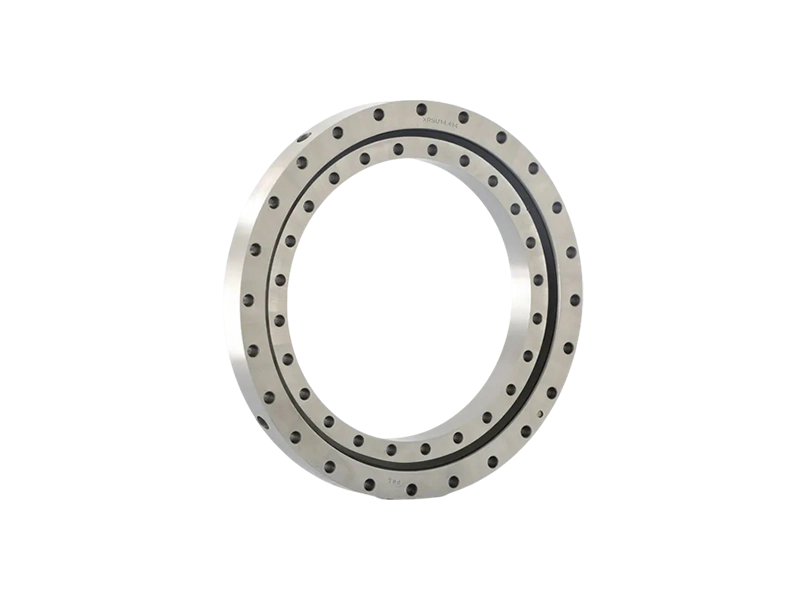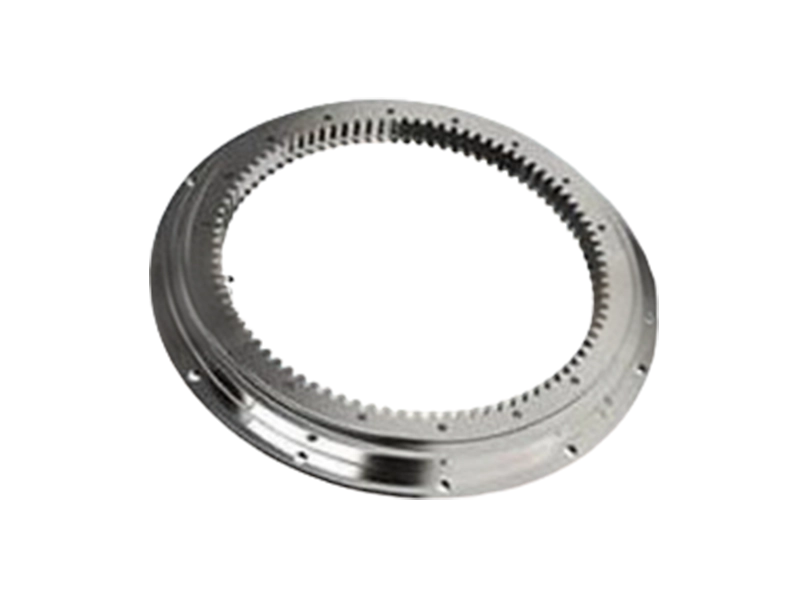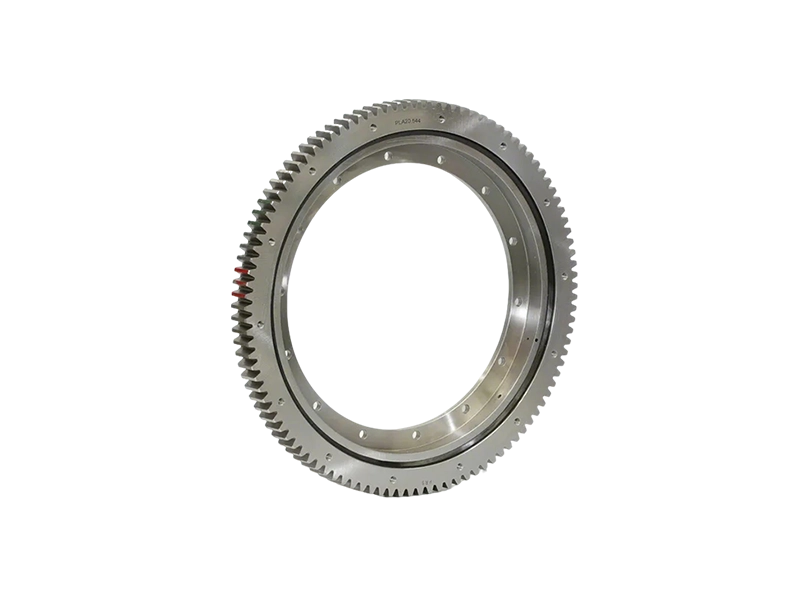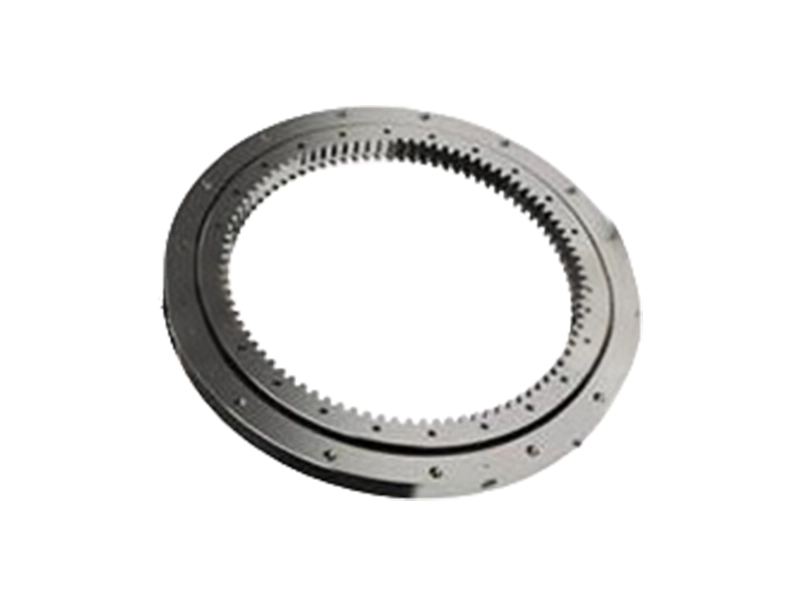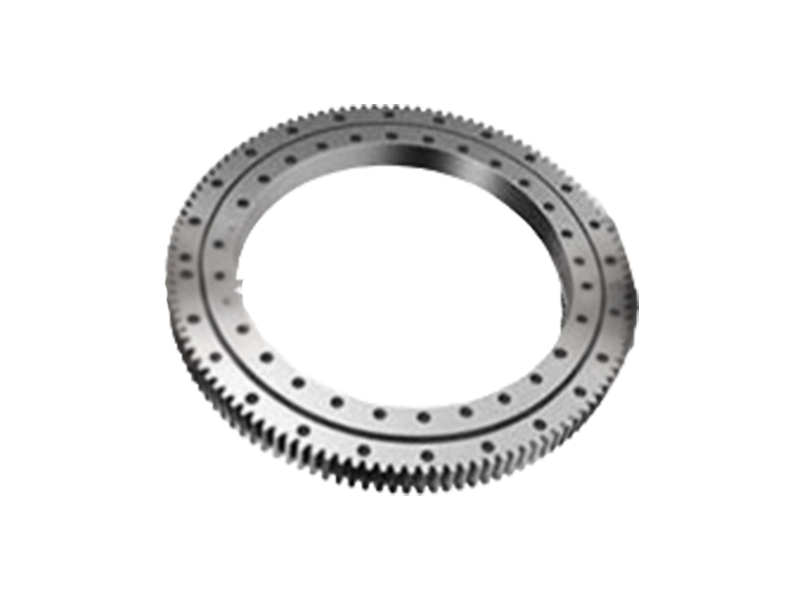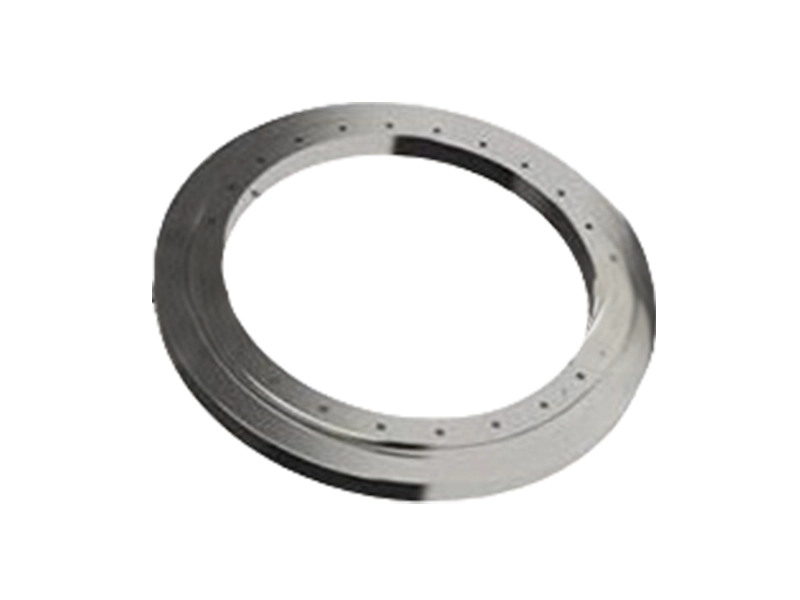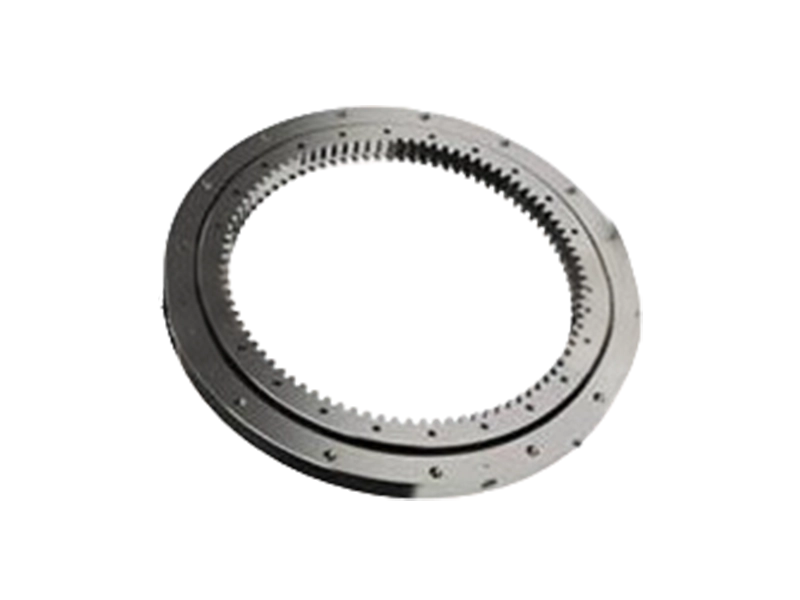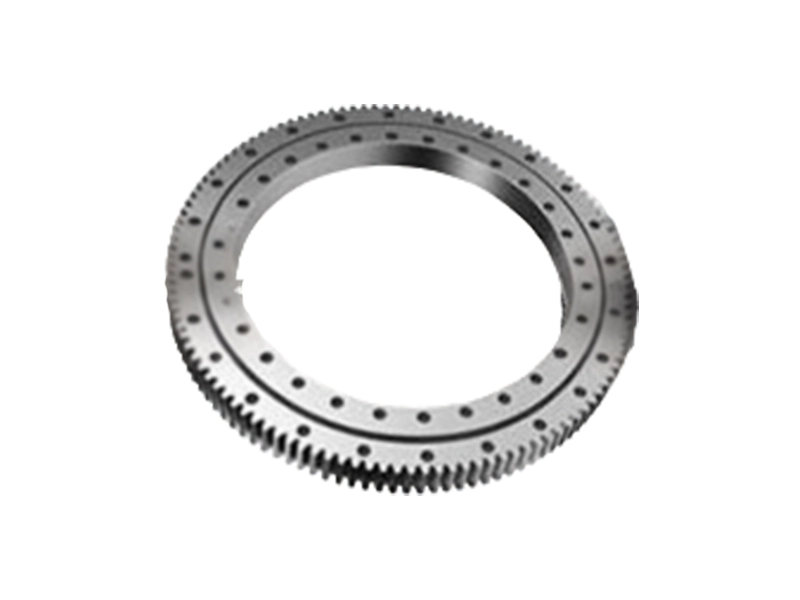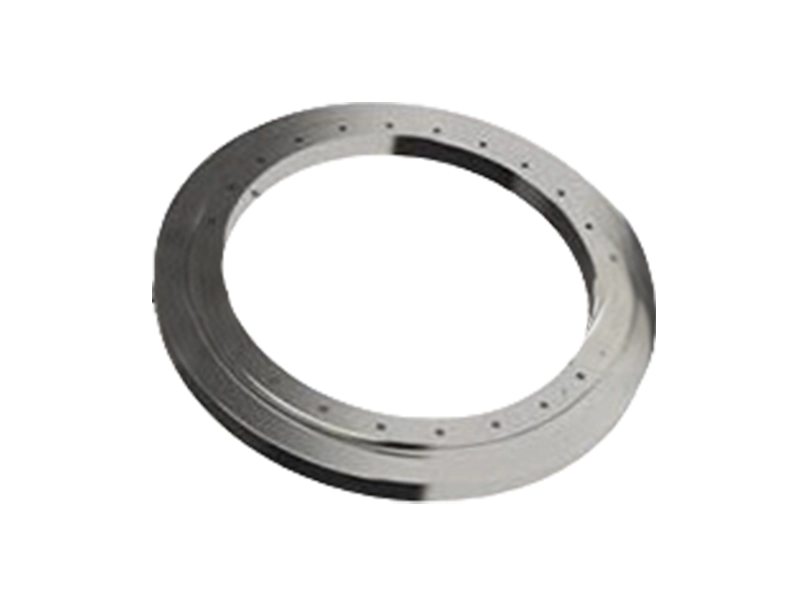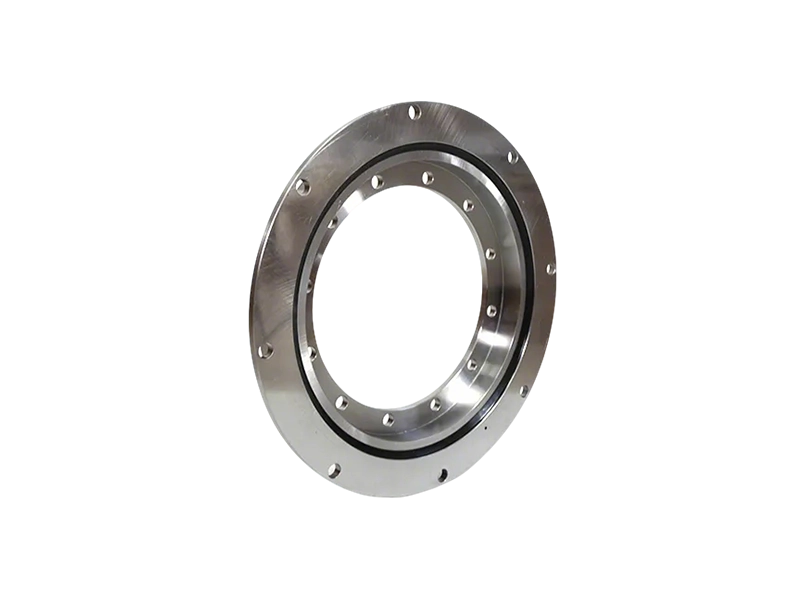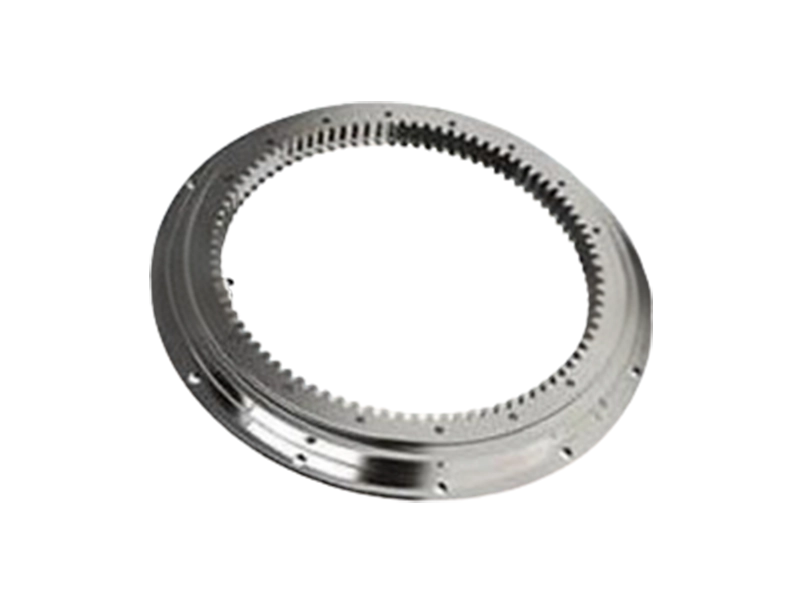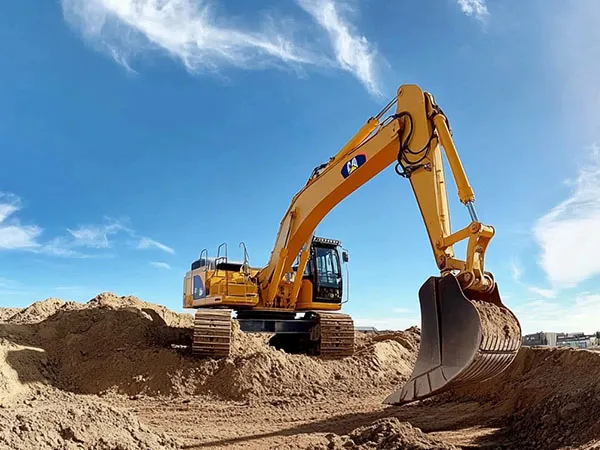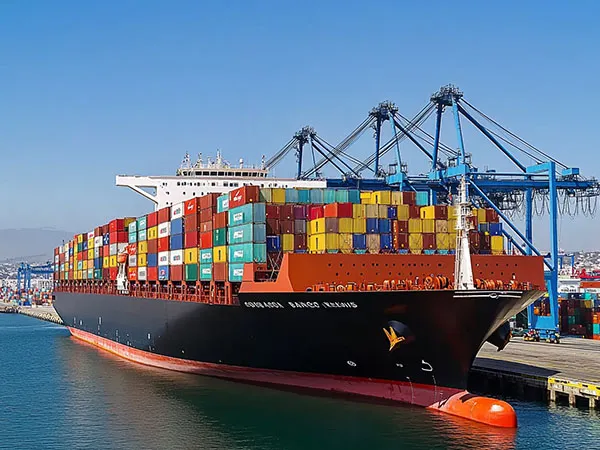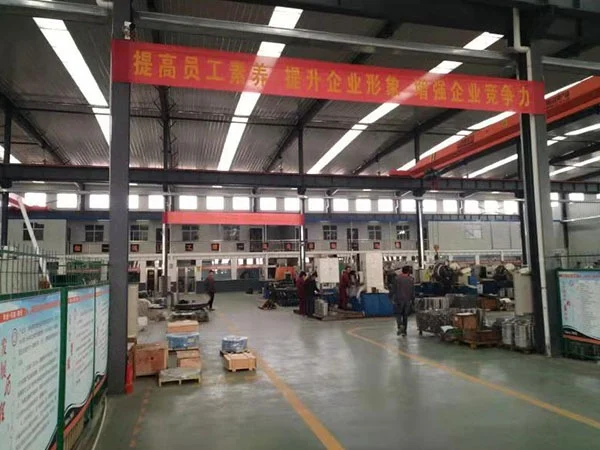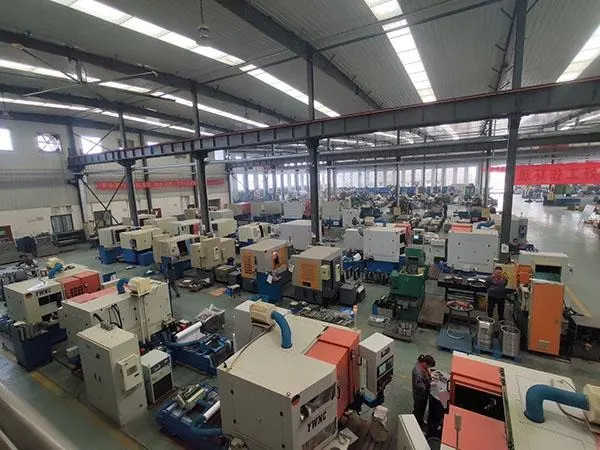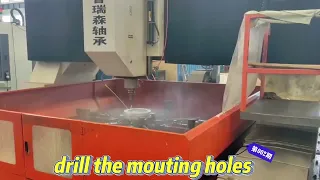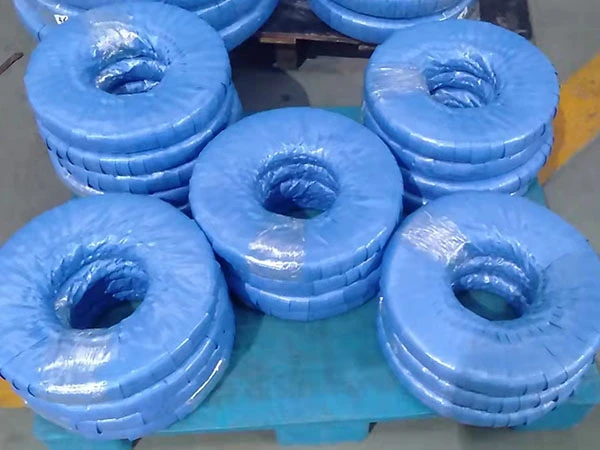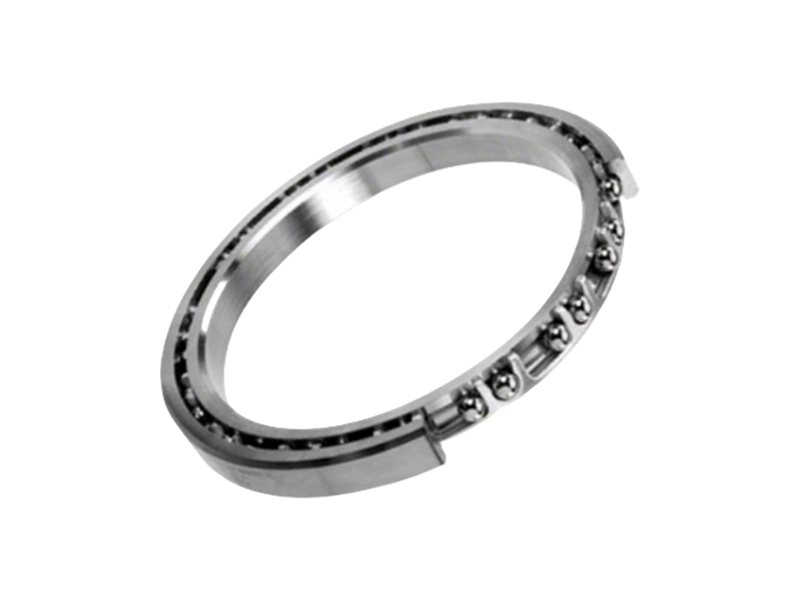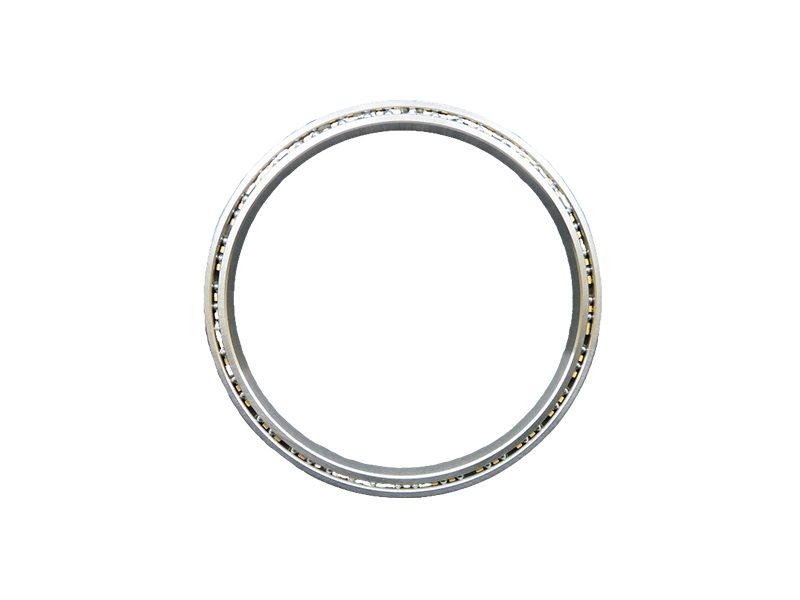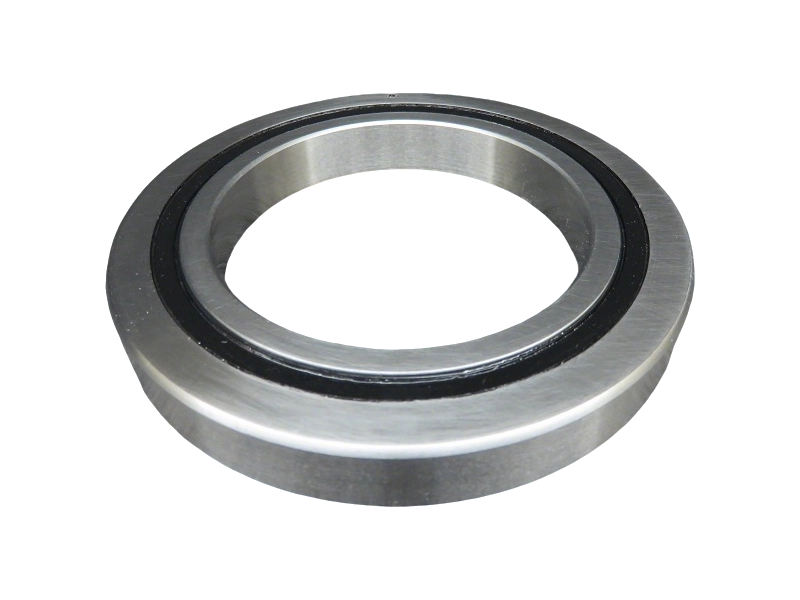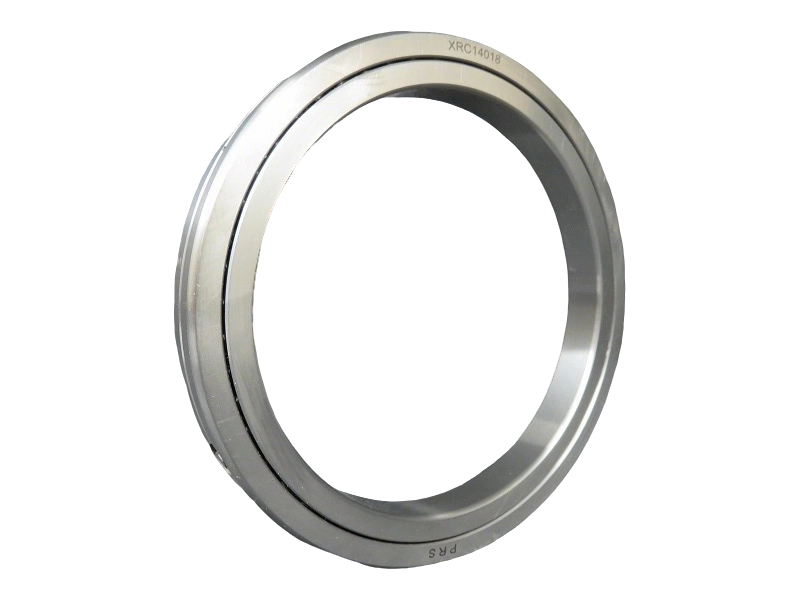1. Preparation & Inspection
Before slewing ring bearing installation begins, inspect the slewing bearing thoroughly for physical damage, dents, or corrosion. Use lifting eyes and rigging equipment rated for the full weight, never lift manually.
Clean and verify the mounting surface is flat, level, and free from debris, burrs, weld slag, paint, or rust. If gaps exist, use shims to ensure proper seating and alignment.
2. Positioning & Backlash Adjustment
Align the ring so that the hardness gap (“S” mark) and soft belt are located outside the main load zone—typically staggered 90° from load direction.
Adjust gear backlash at the radial run‑out point. Use feeler gauges or lead wire on the three highest marked teeth, rotate the slewing ring bearing to confirm smooth engagement, and re‑check clearance after bolting.
3. Bolting & Torque Sequence
Use high-strength bolts (strength class typically 10.9 or above) with hardened flat washers only; spring washers are prohibited.
Tighten bolts symmetrically in a cross pattern or alternating 180° sequence, in progressive stages (e.g., 60%, 80%, then 100% of specified torque).
Ensure even pre‑tightening force around the circumference and mark bolts after tightening to detect loosening over time.
4. Post‑Installation Checks & Testing
After all bolts are torqued, manually rotate the slewing ring to confirm smooth motion; no tight spots or binding. If binding is observed, loosen and re‑adjust alignment.
Conduct a final torque check, inspect gear backlash and bearing clearance again to confirm values remain within tolerance, especially after settling.
5. Lubrication & Sealing
Slewing ring bearings typically ship with initial grease. After installation, re‑lubricate gear teeth and raceways, rotating the bearing while applying grease until fresh material appears at seals.
Apply protective coatings or grease to exposed outer surfaces and gear teeth, and consider automatic centralized lubrication systems for longevity and minimal maintenance.
6. Ongoing Maintenance
Periodically inspect for wear, vibration, noise, or misalignment. Lubricate regularly, typically every ~100 operating hours (roller types may require more frequent grease).
Check bolt preload at intervals or after downtime, and re‑tighten if necessary to compensate for settling.
 XRT Series Crossed Tapered Roller Bearings
XRT Series Crossed Tapered Roller Bearings XV Series Crossed Cylindrical Roller Bearing
XV Series Crossed Cylindrical Roller Bearing XRU Crossed Roller Bearings
XRU Crossed Roller Bearings XRSU Crossed Roller Bearings
XRSU Crossed Roller Bearings XRE Crossed Roller Bearings
XRE Crossed Roller Bearings XRC Crossed Roller Bearings
XRC Crossed Roller Bearings XRBH Crossed Roller Bearings
XRBH Crossed Roller Bearings XRB Crossed Roller Bearings
XRB Crossed Roller Bearings Ultra Thin XRBS Crossed Roller Bearings
Ultra Thin XRBS Crossed Roller Bearings Ultra Thin XRA-C Crossed Roller Bearings
Ultra Thin XRA-C Crossed Roller Bearings Ultra Thin XRA Crossed Roller Bearings
Ultra Thin XRA Crossed Roller Bearings XRBC Crossed Roller Bearings
XRBC Crossed Roller Bearings























